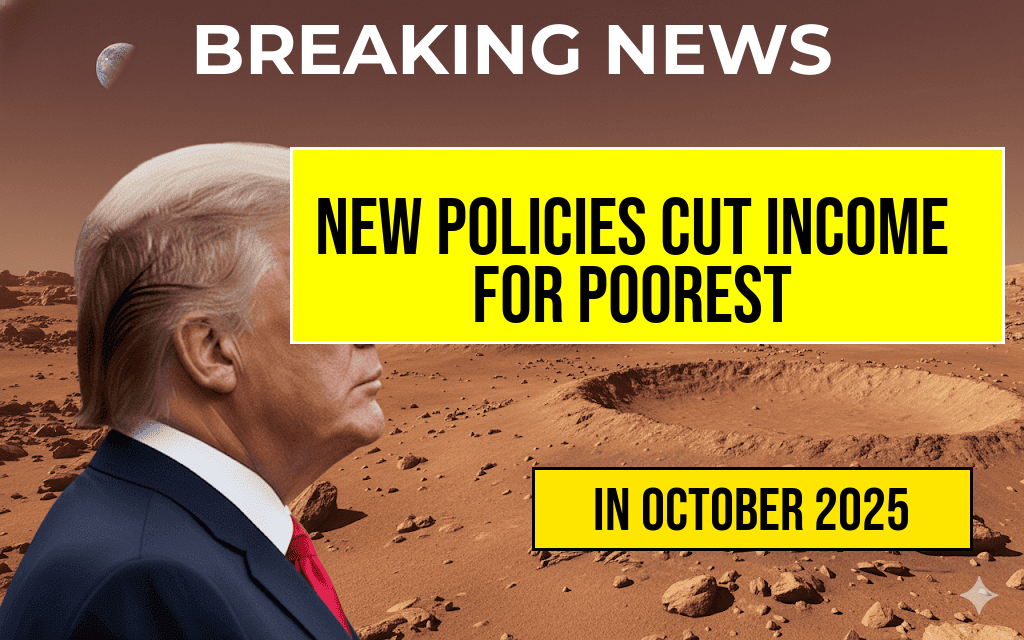Recent policy changes proposed by lawmakers are anticipated to significantly impact the economic stability of low-income households across the United States. A new report indicates that these adjustments could lead to a reduction in annual income for the poorest families by approximately $1,650. As policymakers aim to balance budgets and address national debt, critics argue that these measures disproportionately affect those already struggling to make ends meet. The implications of these policies could exacerbate existing inequalities, raising concerns among advocates for low-income families.
Understanding the Policy Changes
The proposed policies include modifications to various social safety net programs, tax credits, and welfare initiatives. These measures are primarily designed to streamline government spending but may inadvertently burden vulnerable populations. Key changes are set to be implemented in the coming fiscal year, affecting millions of families who rely on government assistance for basic necessities.
Potential Impact on Low-Income Households
According to a recent analysis by the Forbes Advisor, the cuts may lead to significant financial strain for families living below the poverty line. The projected $1,650 decrease in income could mean the difference between affording essential items like food and healthcare or falling deeper into financial hardship.
- Reduction in federal assistance programs
- Changes to tax credits for low-income earners
- Increased eligibility requirements for welfare programs
Voices from the Community
Community leaders and advocates have expressed deep concern about the potential ramifications of these changes. Maria Gonzalez, the executive director of the National Center for Children in Poverty, stated, “These cuts will disproportionately affect the most vulnerable members of our society. Families who are already struggling will face even greater challenges in accessing basic needs.”
Many households are expected to experience heightened food insecurity, inadequate access to healthcare, and increased levels of stress and anxiety. This could lead to long-term detrimental effects on children’s well-being and educational outcomes, further perpetuating the cycle of poverty.
Broader Economic Context
The new policies emerge against a backdrop of rising inflation and increasing living costs. As prices for essential goods soar, families find it increasingly difficult to stretch their budgets. The timing of these proposed cuts raises questions about the priorities of lawmakers, especially as they seek to bolster economic recovery efforts.
Comparative Analysis of Income Reductions
| Policy Change | Estimated Annual Income Reduction |
|---|---|
| Reduction in Food Assistance | $600 |
| Changes to Tax Credits | $800 |
| Increased Welfare Eligibility Requirements | $250 |
| Total Estimated Reduction | $1,650 |
Looking Ahead
As these policies move forward, the response from the public and advocacy groups will likely shape the ongoing discussion about income equality and the role of government in supporting low-income families. Lawmakers are urged to reconsider the implications of their decisions and seek alternative solutions that protect the most vulnerable populations.
With the upcoming elections, the economic plight of low-income households could become a pivotal issue. Advocates are calling for a comprehensive review of the proposed changes and are pushing for a dialogue that prioritizes the needs of the poorest Americans.
For more information on the effects of these policies, visit the National Institutes of Health or the U.S. Census Bureau to explore data on poverty and income distributions.
Frequently Asked Questions
What are the new policies that are expected to reduce income?
The new policies include changes in tax regulations, social welfare adjustments, and modifications to government assistance programs aimed at low-income families.
How will these policies impact the poorest households?
The policies are projected to decrease the income of the poorest households by an average of $1,650, significantly affecting their financial stability and ability to meet basic needs.
Who will be most affected by the income reduction?
The most affected will be families living below the poverty line, particularly those relying on government support and social services, as they will see the largest cut in their disposable income.
What are the reasons behind implementing these policies?
Authorities claim that the policies aim to streamline government spending and allocate resources more efficiently, but critics argue that they disproportionately harm vulnerable populations.
Are there any measures in place to assist those affected?
While some support programs may be introduced to mitigate the impact, many advocates are calling for more comprehensive solutions to protect the poorest households from further financial strain.

Leave a Reply